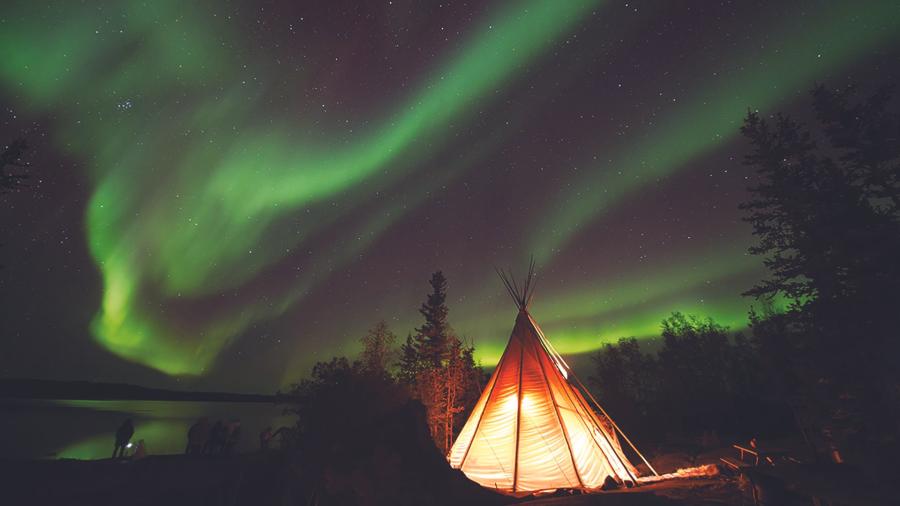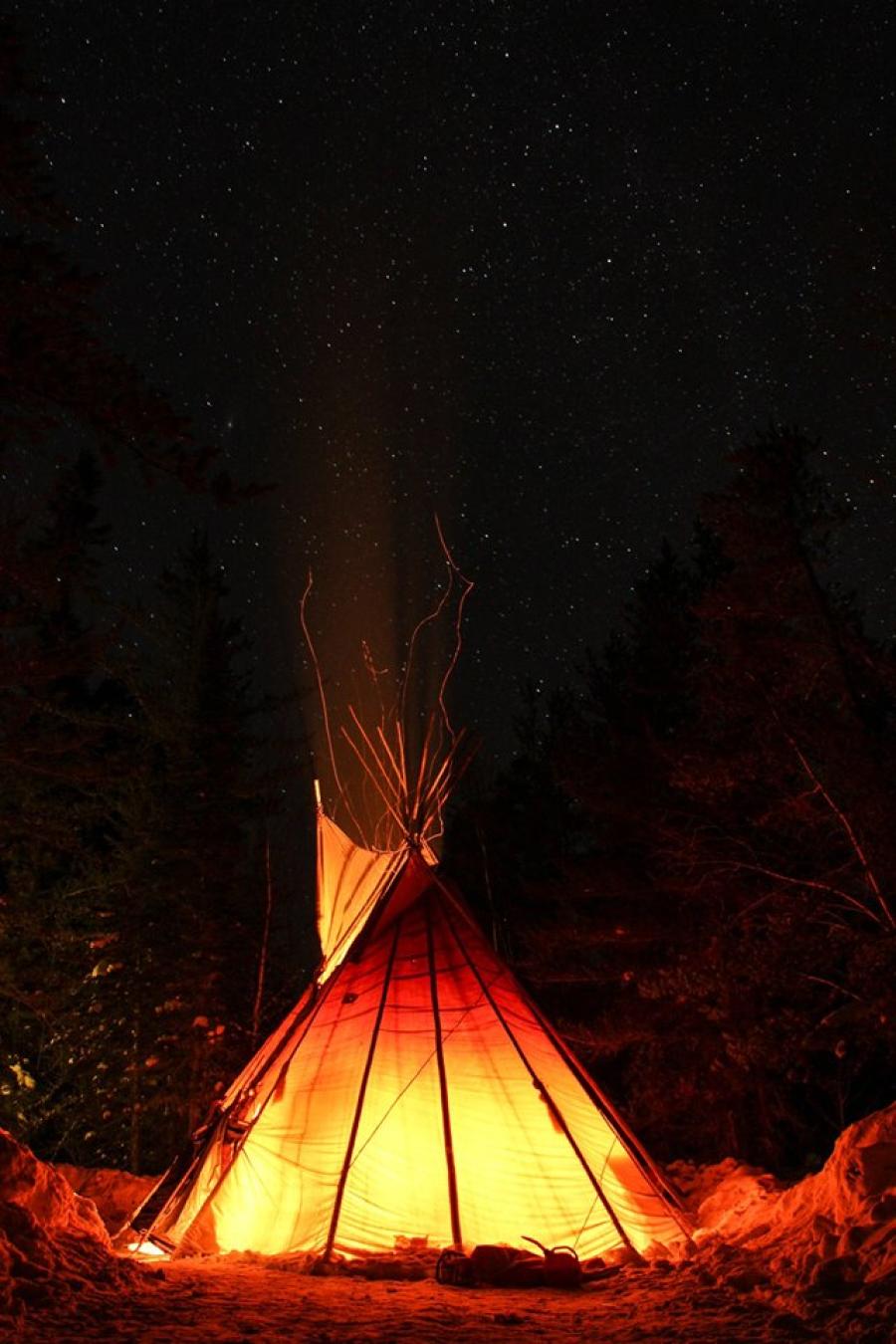Presented to the 22nd session of the United Nations Working Group on Indigenous Populations on July 19 by Colin Samson, on behalf of the Innu Council of Nitassinan, Sept Iles, Quebec, Canada
The Innu are the northernmost Algonquian-speaking peoples of North America. They and their ancestors have occupied the Labrador-Quebec peninsula for as long as 7,500 years. Human understanding of this complex northern landscape is given its deepest meaning in Innu history, stories, legends, religion, and language, as well as in their lives as nomadic hunters.
Yet, this human knowledge and the way of life upon which it is based has been systematically dismantled by an aggressive program of cultural, legal and political extinguishment operated by the state of Canada. In this short presentation, I would like to explain how this works in regard to the Innu in particular, but by extension to many other aboriginal peoples in Canada.
Cultural Extinguishment
Although the distant precursors of this program were generations of missionaries and fur traders, it has been only relatively recently that the policy of destroying the Innu way of life has met with any successes. The crucial turning point was the handing over of the former British home rule colony of Newfoundland (of which Labrador is a part) to the Canadian confederation in 1949. With no consultation with the Innu, and with no mention of them or the indigenous Inuit in the terms of confederation, the newly formed Newfoundland government moved quickly to clear the land of “Indians” to make way for natural resource extraction.
This extraction began in the late 1960s, and is remembered by older Innu hunters as a sad time because their lands and ecosystems were altered out of all recognition and European place names were written over theirs. It began a period in which Innu lost confidence in their way of life. But, it also coincided with a time when the Canadian government was pursuing a policy of sedentarizing the nomadic Innu. While there was no disguising the desire for natural resources, another agenda also loomed. This was the “civilization” of the Innu.
Almost half a century after the brazen policy of fitting the Innu “to take his full place in our society,” we can assess its consequences. In some ways the outcomes could have been predicted, since almost every other Native American community subjected to similar sorts of social engineering have suffered a similar fate. Rapidly, the residents of the two Innu villages of Sheshatshiu and Davis Inlet (or Utshimassits) experienced an abrupt decline in their fortunes. There was a descent into heavy drinking. People began getting illnesses at earlier ages. Hitherto unknown diseases such as chronic heart disease, cancer, and diabetes accompanied the shift from a rich diet of hunted, fished, and gathered food to one almost entirely dominated by junk food stocked by the village stores. In the 1990s, the national and international news media covered epidemics of youth gasoline sniffing, the latest of which involved over 100 children in the winter of 2000-2001 in Davis Inlet. Child sexual abuse, initiated by Oblate priests in the 1960s, became rampant and led to inter-communal animosities. On top of that, the villages recorded some of the highest suicide rates in the world. While suffering a catalogue of tragedies, the Innu also endured highly undignified living conditions. In Davis Inlet the shacks built for the Innu had no running water or sanitation, and were desperately overcrowded with large families.
The building of a new village at Natuashish has in no way alleviated the problems of a people systematically deprived of self-respect. Last week, I was informed that the 19-year-old son of friends in Natuashish who helped introduce me to the Innu hunting life has just ended his own life. He is now the second teenage suicide casualty in a year. Suicide attempts are now running at five to six per month.
Prior to settlement, while they were permanent nomadic hunters, the Innu had full employment. They now have about 80 percent unemployment. Those in paid work are principally employed on a short-term basis in the government-funded Band Councils and the Innu Nation political bodies. A huge swathe of these workers are, in turn, employed in the institutions that Canada has funded to abate the rampant misery created by the sedentarization policy itself. There are now alcohol clinics, counseling facilities, group homes for troubled youth, women’s shelters, as well as general health clinics. According to the Innu today, as well as previous generations of explorers, scientists, fur traders and anthropologists, they were a healthy, vibrant, and self-reliant people, successfully living in one of the most demanding landscapes on the planet. What is remarkable is how rapidly they transformed for the worse.
To ask why the Innu collapsed so dramatically, we have to look at their relationships with those that have so abruptly encroached upon their lands, and particularly with the government of Canada. The changes were engineered by the state. It was the government that imposed its law upon them, mandated that their children attend schools aimed at assimilation, punished them for hunting caribou and practicing their way of life through rigid enforcement of game laws in the 1970s and 1980s. The state has also enthusiastically approved the sale of their lands for hydro-electric power generation, as well as mining, logging, and low-level flight training.
What I have described is a process of cultural extinguishment, which in my view, is intentional. The government of Canada has been reminded continuously by aboriginal peoples and by their organizational representatives (most eloquently by former National Chief of the Assembly of First Nations, Matthew Coon-Come) that policies that cage Native peoples into slums like Davis Inlet, confiscate their land for mega-projects, and authorize assimilation campaigns are bound to be disastrous.
Legal and Political Extinguishment
But Canada is not content with cultural and physical extinguishment, to which it offers only the palliatives of medical treatment facilities and improvements in community infrastructure. It ensures its absolute control over Native peoples through legal and political extinguishment as well. Even though Canada is the author of changes that have virtually destroyed Innu society, there is not one shred of paper that the federal government can produce to demonstrate its sovereignty over the Labrador-Quebec peninsula or the Innu. Unlike several other indigenous peoples in Canada, the Innu were never part of the treaty process until recently, and have not formally ceded their land. Yet, under Canadian policy, they have to prove their “claim” to their own lands.
The Innu are now engaged in negotiations for a measure of self-determination through the Comprehensive Land Claims (CLC) process. These negotiations, however, have been no defense against the continual confiscation of their territories. Land on the table as part of the Innu Nation “claim” has been sold off while negotiations are ongoing. The 1997 Delgamuukw Supreme Court decision has now made this practice less tenable, but it has not changed the final aim of the land claims policy—the “extinguishment” of underlying aboriginal title in exchange for limited rights to self-government, hunting, and fishing in defined territories and cash compensation.
Particularly relevant to this international forum is the fact that CLC remains rooted in the extinguishment principle and is therefore contrary to many of the articles in the U.N. Draft Declaration on the Rights of Indigenous Peoples. That is, CLC is a latter-day treaty process in which Native people must exchange their “aboriginal title” to the land for cash compensation and particular hunting, fishing, and self-government rights. Aboriginal groups that have not signed a treaty have little option other than to sign up to this process. They can, of course, refuse to participate in the process itself, but this makes it even easier for developers to take their land. At the same time, the state can also withdraw—and Canada has done so when the Innu evicted a racist judge from Davis Inlet in 1993—leaving them in the same vulnerable position. What all this means is that in order for aboriginal peoples to obtain rights guaranteed both by the state and international law they are compelled into a process that demands that they first sign over the land to Canada.
In response to numerous aboriginal criticisms of this policy, the international outcry over it, and the U.N. Human Rights Committee recommending its abandonment as incompatible with Article I of the Covenant on Civil and Political Rights, the extinguishment provision was recently amended. In some new land claims treaties the words “surrender” and “extinguishment” are to be deleted, but in return the aboriginal party would have to agree that the treaty itself defined the totality of their rights and that they could never assert their rights granted from any previous treaties or from any violations of aboriginal title that may have occurred in the past. Under this arrangement, the Canadian government is indemnified against all violations of aboriginal or treaty rights in perpetuity. It simply amounts to another form of extinguishment and imposes even more restrictions than the old policy.
Violation of International Human Rights Standards
Canada’s practices of cultural and legal extinguishment are in violation of a number of international human rights recommendations, which the declaration would put into sharper focus. These include Article 27 of the U.N. Covenant of Human Rights and International Labor Organization Convention 169 on indigenous people, which stipulate that all minorities shall not be prevented from enjoying their own culture and prescribe governments to take affirmative steps to protect indigenous cultures and redress injustices. In 1999, the United Nation’s Human Rights Committee specifically condemned Canada for the practice of “extinguishing” aboriginal peoples’ rights and described the situation of indigenous people as “the most pressing human rights issue facing Canadians.”
These forms of extinguishment are clearly what much of the declaration is designed to combat. Virtually every article of the draft declaration is a ringing denunciation of this practice.



